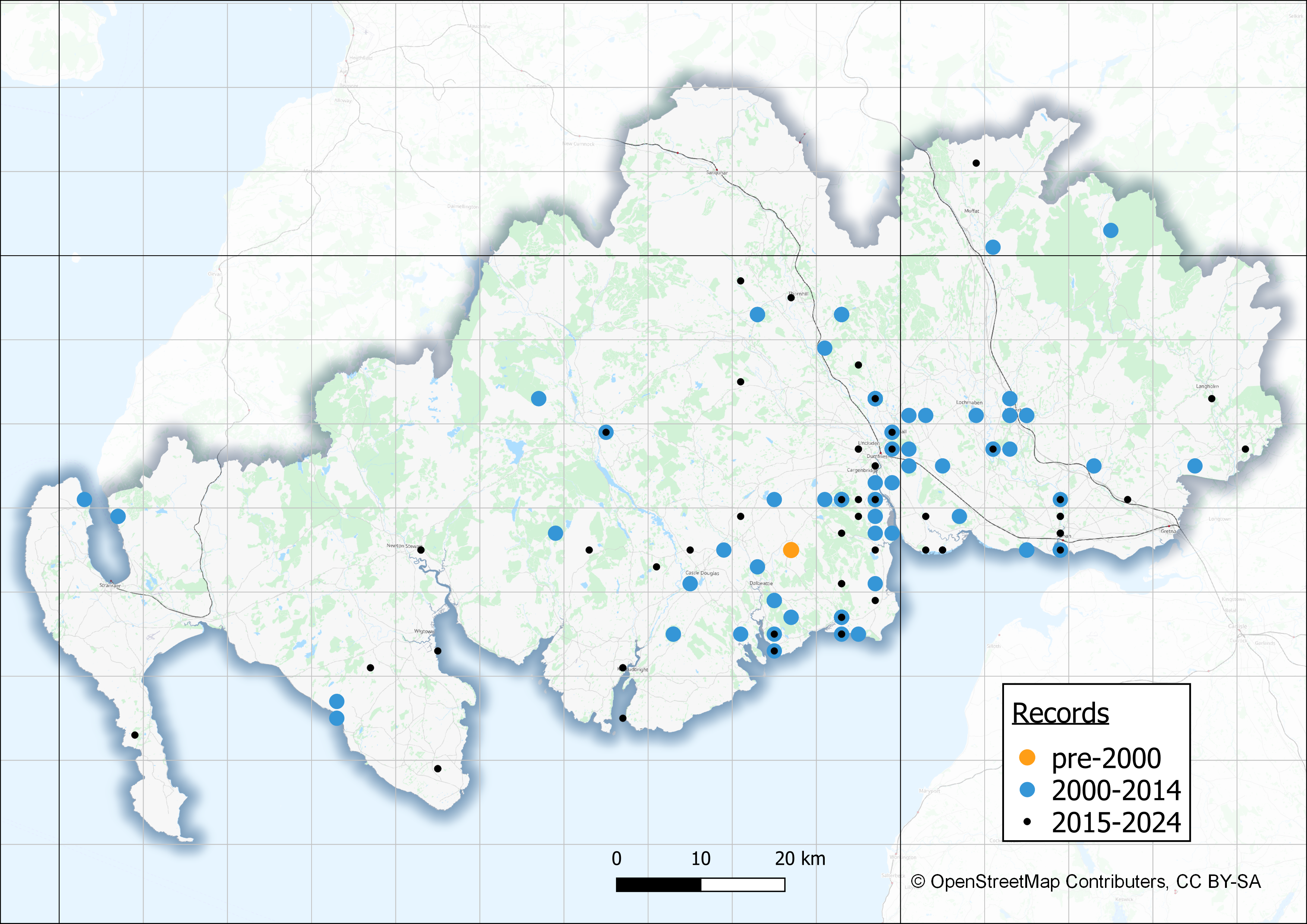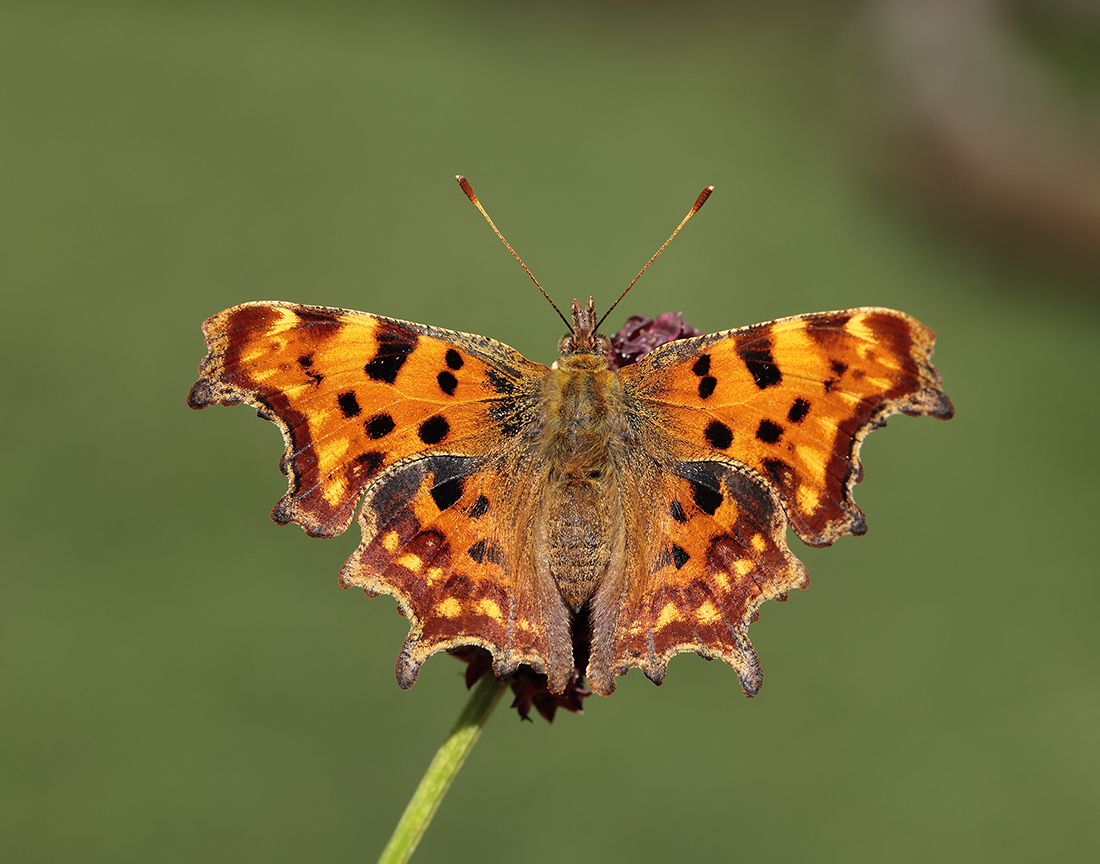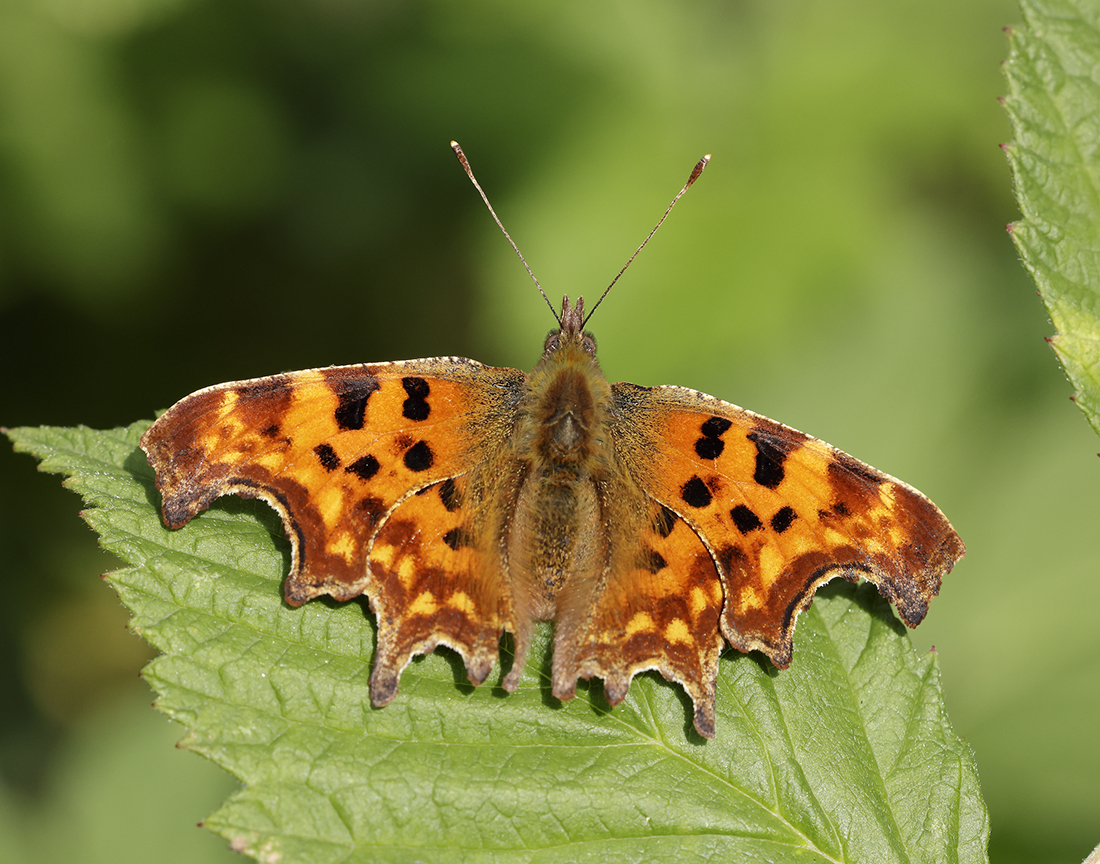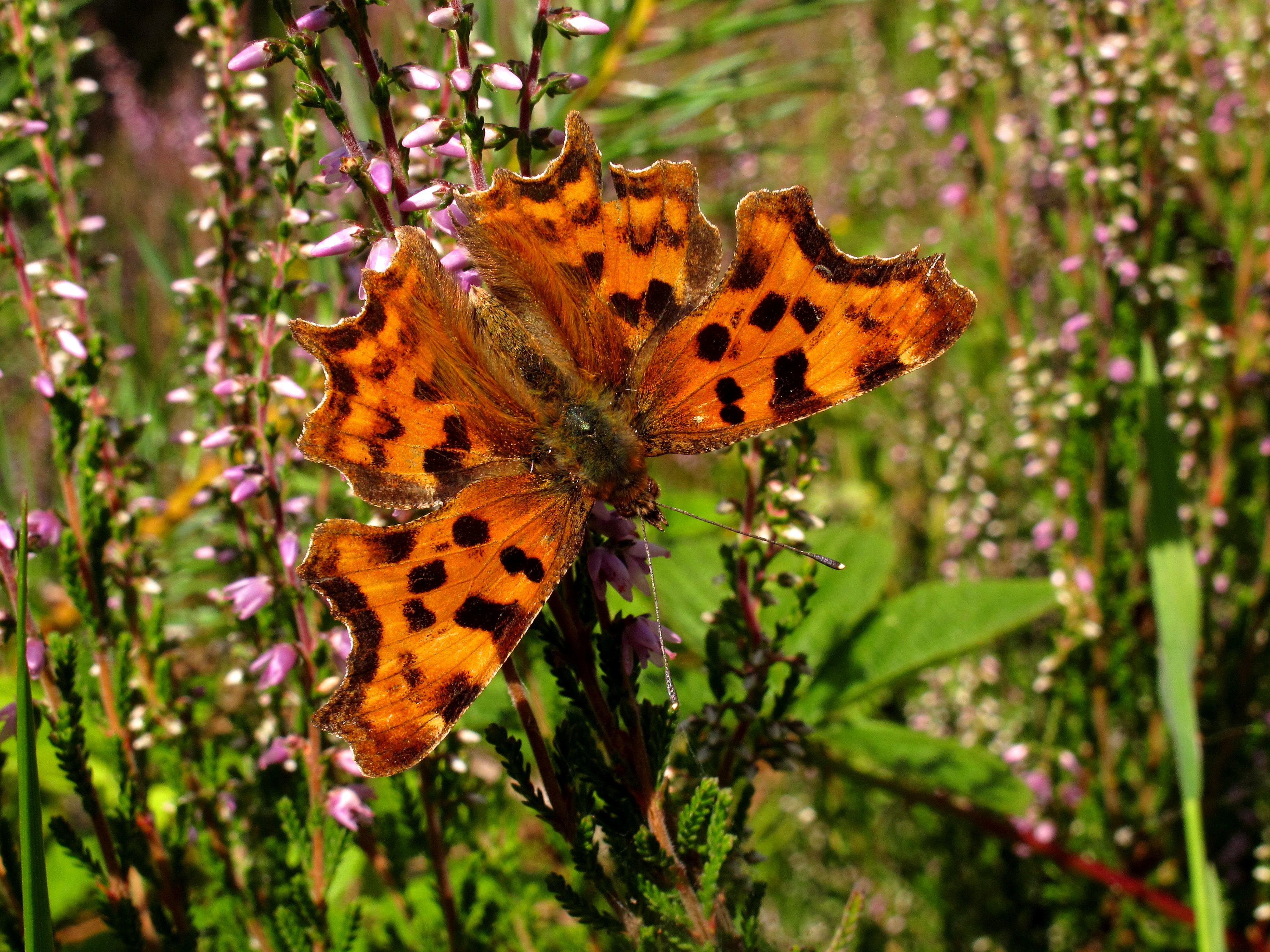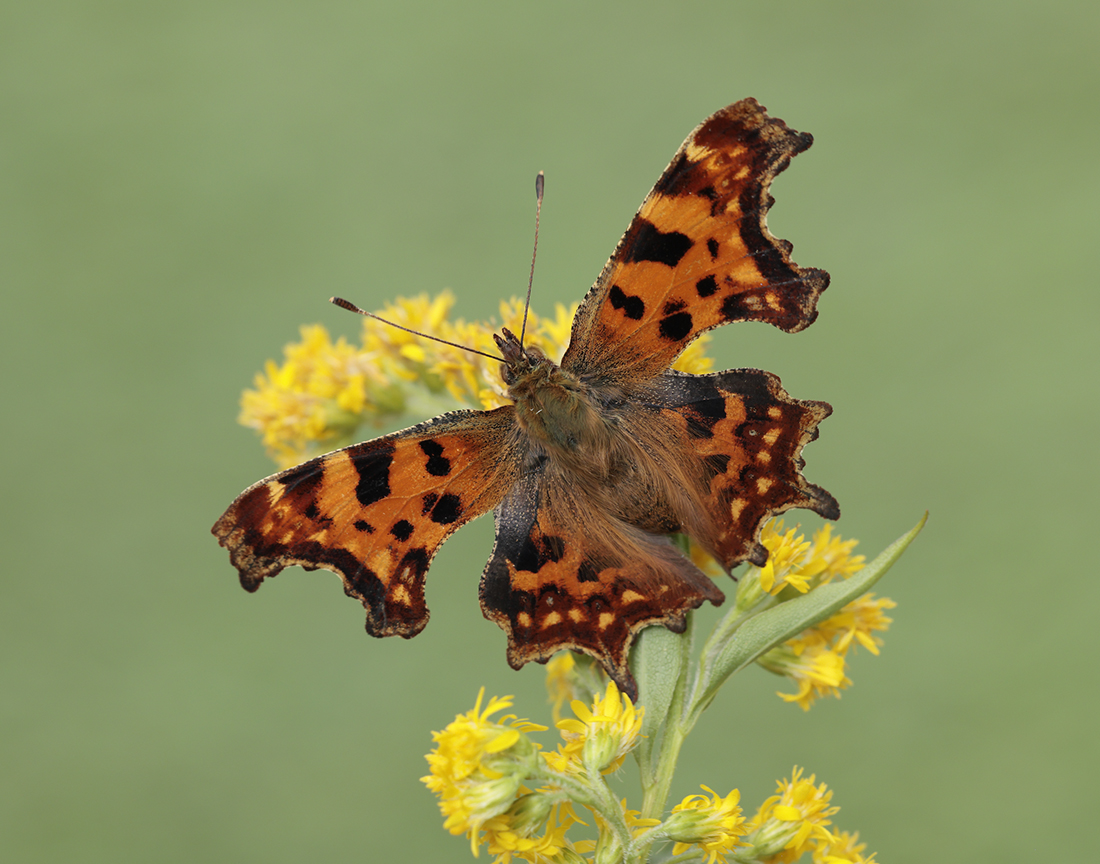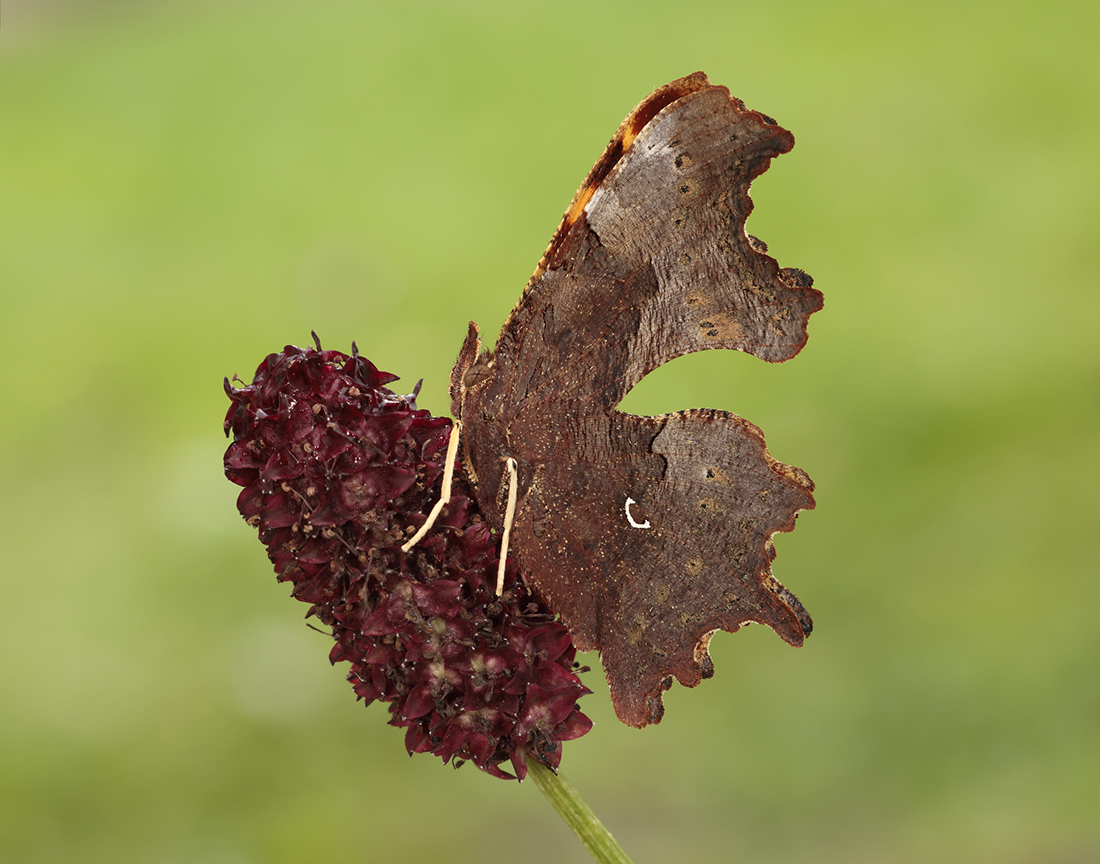The Comma has re-colonised Scotland rapidly since its return in the mid-1990s, having been absent for 100 years. However, its spread has been mostly in the east, and is still scarce in Dumfries and Galloway and other parts of western Scotland.
Identification
The Comma is one of our most readily identifiable butterflies, but also a master of disguise. Both the adult with its ragged wings, and the pupa, are remarkable mimics of withered leaves, while the caterpillar performs an excellent imitation of a bird dropping. As well as its unique wing shape, the other giveaway is the tiny white ‘comma’ on the undersides, the function of which is unknown.
Life cycle & flight period
The Comma overwinters as an adult, well camouflaged amongst dead leaves in woodland, and takes to the wing again as the weather warms in March. The males and females will spend time searching for mates and for nectar from Blackthorn and Sallow. The eggs are laid singly and hatch after a couple of weeks, and soon after the caterpillar moults into its amazing bird-dropping garb. It only has a few more weeks to survive and avoid predators in order to pupate. After metamorphosis most of the emerging adults often move away from their woodland retreats to seek nectar elsewhere.
Depending on the weather conditions, some of the first emerging early summer adults will be of a pale form called ‘hutchinsoni’. This form does not overwinter but instead quickly fits in another generation which completes its life cycle in a few weeks to produce a cohort of darker adult Commas in the autumn, and it is these that will again spend the cold months hiding away in woodland.
Larval foodplant
The Comma caterpillar can feed on elms, nettles and hop (the latter a widespread but scarce plant in the region.
Habitats
In the summer Commas will come into gardens and parks in search of a wide range of nectar-providing summer flowers, but will also feast on ripe and rotting fruit.

